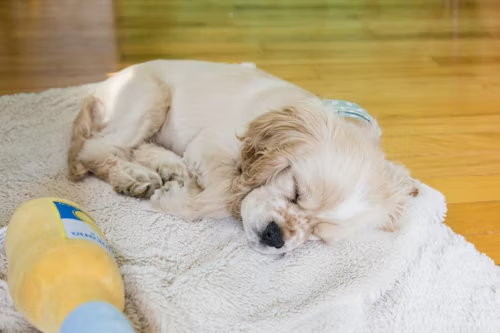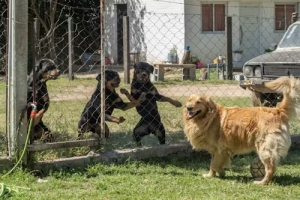You Don’t Need a New Dog — You Need a New Routine
Many dog owners feel frustrated at home. The barking, the jumping, the pacing, the chewing — it feels constant. Maybe you’ve tried more walks, more toys, or more affection. But the chaos continues.
Here’s the truth: your dog’s behavior doesn’t change until the structure around them changes.
The fastest way to improve behavior at home is by building a simple, consistent routine that sets clear expectations and gives your dog purpose throughout the day. In this blog, we’ll break down exactly how to do that — and why it works.
Why Structure Solves More Than Commands
Dogs don’t just need exercise. They need mental clarity. A predictable rhythm to their day gives them comfort and teaches them what’s expected. Without structure, dogs become restless, confused, and reactive.
A dog with no clear leadership will often try to make decisions on their own — and that’s when the problems start.
Signs Your Dog Lacks Structure at Home
-
Pacing around the house
-
Barking at windows or doors
-
Jumping on people or furniture
-
Following you room to room
-
Constant demand for attention
-
Chewing or destructive behavior
-
Ignoring basic obedience cues indoors
These behaviors are usually symptoms of a dog who’s mentally underworked and emotionally overstimulated.
How to Reset Your Dog’s Behavior with Structure
1. Introduce a Daily Schedule
Build your day around predictable moments: wake-up, potty, walk, place time, meals, rest, training, bedtime. Dogs learn fast when their day follows a rhythm.
Predictability reduces anxiety and gives your dog a sense of security and purpose.
2. Use the Crate or “Place” for Calm Time
Instead of letting your dog follow you all day or roam freely, give them structured downtime. Crate time or a defined “place” teaches them to relax, self-regulate, and observe calmly.
This is not punishment — it’s a healthy boundary that prevents overstimulation.
3. Earned Freedom, Not Constant Freedom
Instead of giving your dog full access to everything, teach them to earn space and freedom. If they can’t behave calmly in the living room, practice “place” there before letting them roam.
This builds respect for boundaries and improves impulse control.
4. Short, Intentional Training Sessions
You don’t need an hour a day. Five to ten minutes of focused obedience practice (heel, sit, recall, place) each morning and evening is enough to reinforce expectations and build reliability.
Keep it consistent. Keep it simple.
5. Interrupt and Redirect Problem Behavior Immediately
If your dog jumps, barks, or misbehaves, interrupt the behavior with a firm “no,” then redirect them to a calm command like “sit” or “place.” Reward when they comply.
Don’t ignore bad behavior and don’t wait for it to pass. Address it with structure every time.
Sample Daily Home Routine for Better Behavior
-
7:00 AM: Wake, potty, short walk
-
7:30 AM: Breakfast, then crate or “place” for 30–60 minutes
-
9:00 AM: Light training session or structured play
-
10:00 AM – 1:00 PM: Rest time in crate or “place”
-
1:30 PM: Potty, leash walk, brief obedience drill
-
3:00 PM – 5:00 PM: Calm chew toy or supervised free time
-
6:00 PM: Dinner
-
7:00 PM: Second training session or quiet walk
-
8:00 PM: Wind-down crate time or “place”
-
10:00 PM: Final potty, bedtime routine
This framework can be adjusted to any lifestyle — the key is consistency.
What Not to Do
-
Don’t free-feed or let your dog graze
-
Don’t allow constant shadowing or following
-
Don’t give affection during chaotic behavior
-
Don’t allow barking at windows without consequence
-
Don’t expect obedience without practicing it
Final Thoughts: Structure = Freedom
When your dog knows what’s expected, they become more relaxed, more obedient, and more enjoyable to live with. You don’t need to train every minute — you need to guide your dog through the day with consistent patterns and calm leadership.
The fastest way to change your dog’s behavior isn’t more play. It’s more structure. And the more you lead with purpose, the faster your dog will follow with respect.
Unlock your dog’s potential with professional training in West Virginia!
Off Leash K9 Training in West Virginia is your trusted partner for building a calm, obedient, and reliable companion. From basic manners to advanced off-leash obedience, our proven methods are tailored to fit your dog’s needs. Experience the transformation in focus, behavior, and confidence. Contact us at (304) 309-3647!


